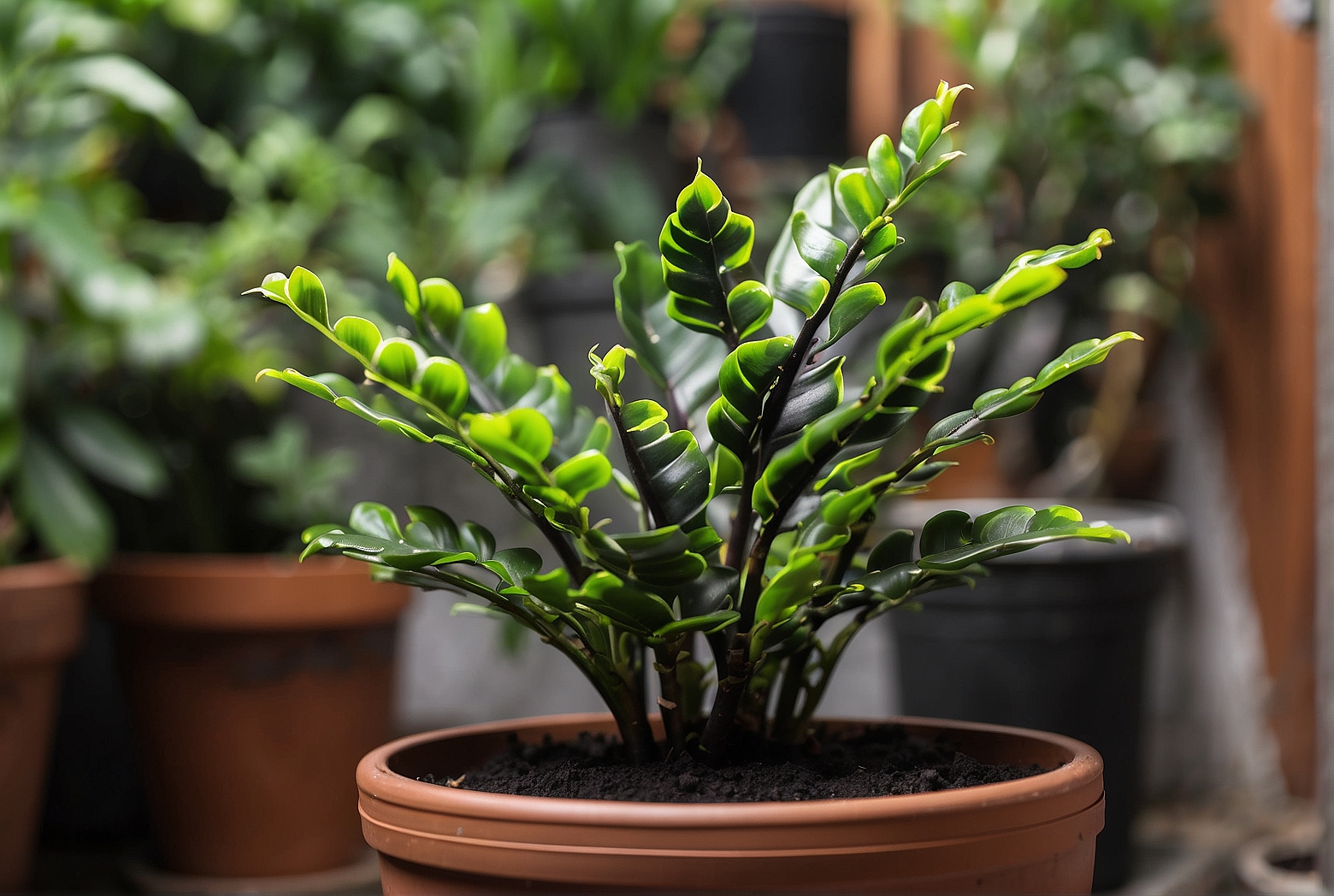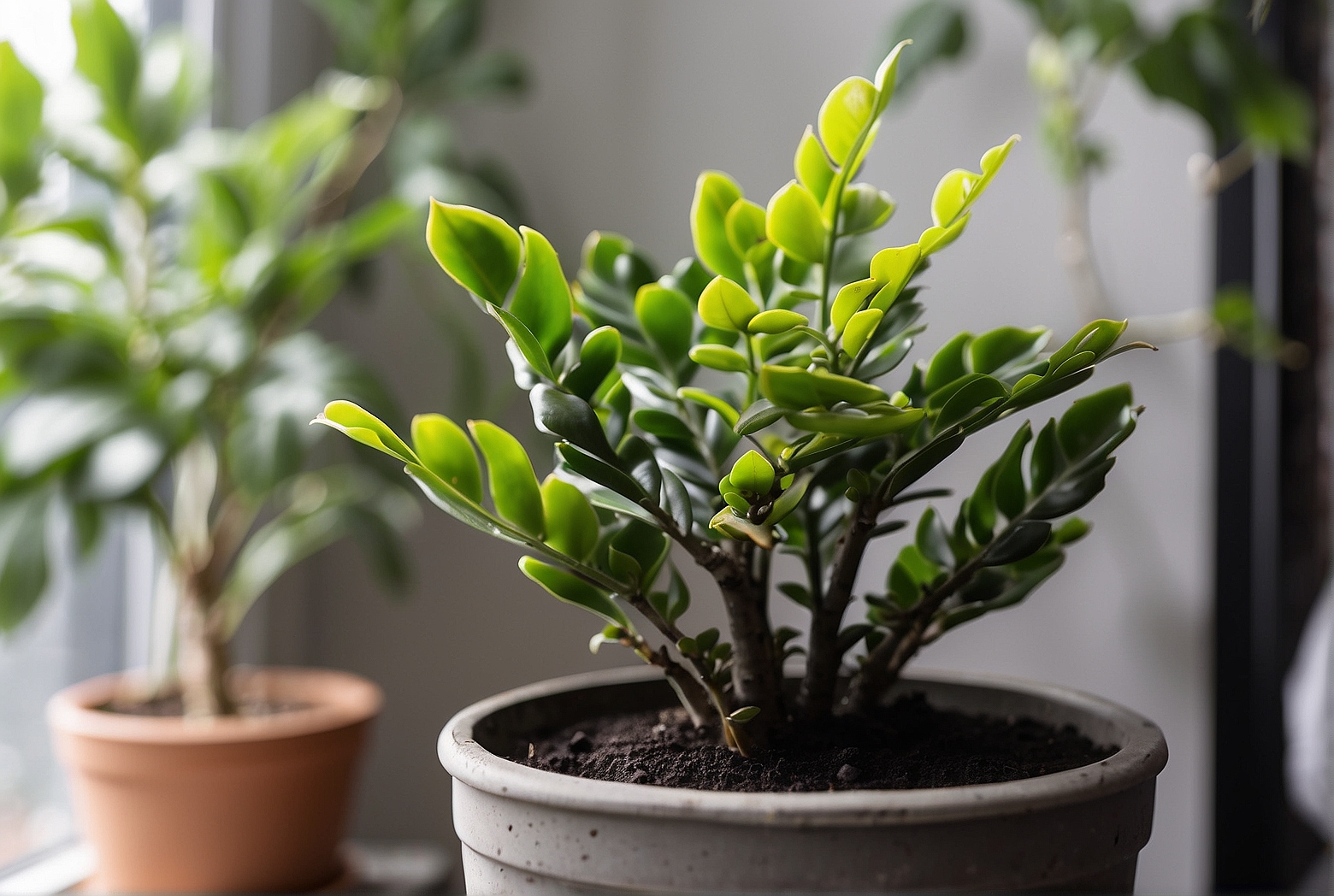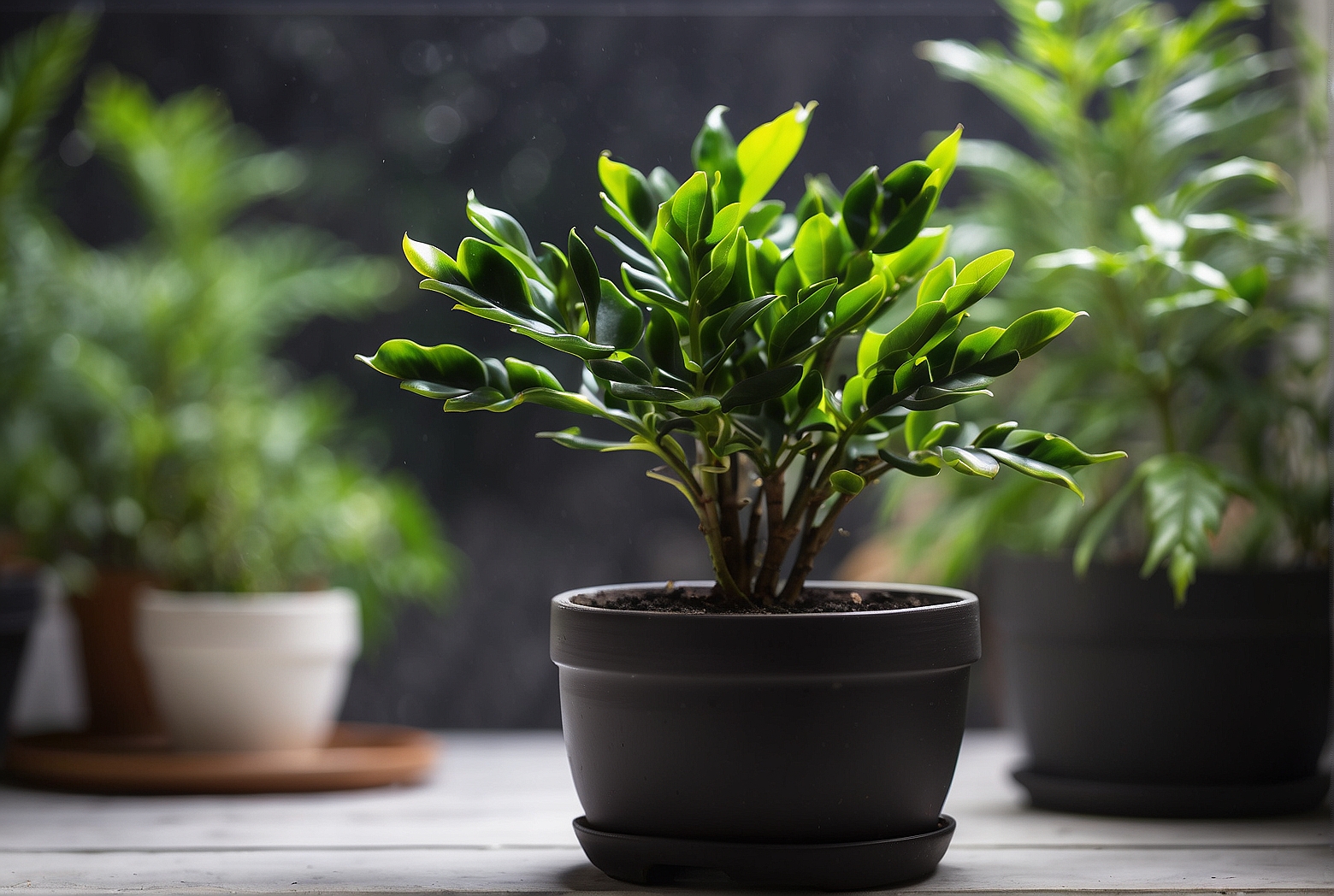Last Updated on March 31, 2024 by Tony Manhart
Have you noticed black spots appearing on your ZZ plant and wondered what could be causing them? In this article, we will explore the common reasons behind the development of black spots on your beloved ZZ plant and how you can address this issue. Whether you are a seasoned plant parent or a novice green thumb, understanding the potential causes and finding the appropriate solutions will help ensure the health and longevity of your ZZ plant. So, let’s uncover the mystery behind those black spots and restore the vitality of your plant!
Causes of Black Spots on ZZ Plants
If you’ve noticed black spots on your ZZ plant’s leaves, don’t worry, you’re not alone. Many ZZ plant owners have experienced this issue, and there are several potential causes to consider. Understanding these causes is crucial in order to address the problem effectively and ensure the health and vitality of your plant.
1. Overwatering
Overwatering is one of the most common causes of black spots on ZZ plants. When you water your plant too frequently or give it more water than it needs, the roots become waterlogged, leading to a lack of oxygen in the soil. This can cause the leaves to develop black spots.
Watering Frequency
To avoid overwatering your ZZ plant, it’s important to establish an appropriate watering frequency. ZZ plants prefer to dry out between waterings, so it’s best to wait until the top inch or so of the soil feels dry before watering again. This typically translates to watering your plant once every two to three weeks.

Watering Technique
In addition to the frequency, the technique you use to water your ZZ plant is also important. It’s best to water the plant at the base, directly into the soil, rather than sprinkling water on the leaves. This helps prevent excessive moisture from accumulating on the leaves, which can contribute to the development of black spots.
Pot Drainage
Another factor to consider is the drainage capability of your plant’s pot. If the pot doesn’t have proper drainage holes or the soil is compacted, excess water may accumulate, leading to root rot and black spots on the leaves. Ensure that your ZZ plant is in a pot with adequate drainage to prevent this issue.
2. Underwatering
While overwatering is a common issue, underwatering can also contribute to the development of black spots on ZZ plants. When a ZZ plant doesn’t receive enough water, the leaves may start to develop dry, brown edges that eventually turn black.
Watering Frequency
To prevent underwatering, it’s important to establish a consistent watering schedule for your ZZ plant. While these plants are resilient and can tolerate some neglect, they still require regular watering. Aim to water your ZZ plant once the top inch of the soil feels dry to the touch.

Watering Technique
When watering an underwatered ZZ plant, be sure to water thoroughly, ensuring that the water penetrates the depth of the pot. This helps hydrate the roots and prevents moisture discrepancies that can lead to black spots.
Pot Drainage
Similar to overwatering, poor drainage can also contribute to underwatering. If the pot your ZZ plant is in doesn’t have proper drainage, excess water may accumulate at the bottom, causing the roots to become waterlogged. Ensure that your plant is in a pot with adequate drainage to prevent underwatering issues.
3. Poor Drainage
Poor drainage is a common issue that can lead to a variety of plant problems, including black spots on ZZ plants. If the soil doesn’t drain well, excess water may accumulate, causing root rot and other moisture-related issues.
Choosing the Right Pot
When selecting a pot for your ZZ plant, choose one with drainage holes at the bottom. This allows excess water to escape, preventing waterlogged soil and the development of black spots. Additionally, ensure that the pot is the appropriate size for your plant, allowing the roots to grow and thrive.
Using Suitable Potting Soil
Using suitable potting soil is crucial for ensuring proper drainage. Opt for well-draining soil that is specifically formulated for indoor plants. This type of soil allows water to flow through easily, preventing water accumulation and reducing the risk of black spots caused by poor drainage.
Ensuring Proper Drainage
Aside from choosing the right pot and soil, you can also enhance drainage by adding a layer of drainage material at the bottom of the pot. This can be in the form of small rocks or pebbles, which create space for water to flow through freely. Ensure that the drainage layer doesn’t block the drainage holes.
4. Fungal Infections
Fungal infections can also be a culprit behind the development of black spots on ZZ plants. These infections are usually caused by excessive moisture, poor air circulation, or contaminated soil or water.
Identifying Fungal Infections
Fungal infections on ZZ plants are often characterized by fuzzy or powdery growth on the leaves or stems, along with the presence of black spots. The spots may gradually increase in size and darken over time.
Preventing Fungal Infections
To prevent fungal infections, it’s important to maintain proper air circulation around your ZZ plant. Avoid placing it in a poorly ventilated area and ensure that the leaves have enough space between them to allow for airflow. Additionally, avoid overwatering and ensure that the potting soil is free from contaminants.
Treating Fungal Infections
If your ZZ plant is already affected by a fungal infection, it’s important to address it promptly. Remove any affected leaves or stems, taking care to disinfect your tools between cuts to prevent spreading the infection. Consider using a fungicide recommended for indoor plants to treat the remaining infection and prevent its spread.
5. Bacterial Infections
bacterial infections can also manifest as black spots on ZZ plants. These infections are typically caused by poor hygiene practices, contaminated tools, or infected soil.
Identifying Bacterial Infections
Bacterial infections on ZZ plants often result in dark, watery spots on the leaves. The spots may appear shiny and greasy, and they can expand rapidly.
Preventing Bacterial Infections
To prevent bacterial infections, it’s important to practice good hygiene and provide a clean environment for your ZZ plant. Avoid touching the leaves with dirty hands, and use clean tools when pruning or handling the plant. Additionally, ensure that the potting soil is free from bacteria and other contaminants.
Treating Bacterial Infections
If your ZZ plant is already affected by a bacterial infection, it’s crucial to act quickly. Remove any affected leaves or stems, making sure to sterilize your tools between cuts. Consider using a bactericide recommended for indoor plants to treat the remaining infection and prevent its spread.
Preventive Measures for Black Spots
By following a few preventive measures, you can significantly reduce the risk of black spots on your ZZ plants.
Maintaining Proper Watering
Ensure that you water your ZZ plant appropriately, neither over nor underwatering. Check the soil regularly and water when the top inch feels dry to the touch. Remember to water at the base of the plant and avoid excessive moisture on the leaves.
Providing Adequate Drainage
Select a pot with drainage holes and use well-draining soil to promote good drainage. Consider adding a layer of drainage material at the bottom of the pot to prevent the accumulation of excess water. This helps prevent root rot and other moisture-related issues.
Proper Hygiene and Plant Care
Practicing good hygiene and providing proper care for your ZZ plant is essential. Keep your hands clean when handling the plant, and sanitize your tools regularly to avoid the spread of diseases. Ensure that the potting soil is free from contaminants and provide adequate air circulation around the plant.
Conclusion
If you notice black spots on your ZZ plant, it’s important to diagnose the cause so that you can take appropriate action. Overwatering, underwatering, poor drainage, fungal infections, and bacterial infections are all potential culprits. By following the preventive measures outlined in this article and addressing any issues promptly, you can maintain a healthy and vibrant ZZ plant free from black spots. Remember, with the right care, your ZZ plant can thrive and bring greenery and beauty to your indoor space.
Tony Manhart is a passionate gardener who has been tending to gardens for over 20 years. He takes pride in creating beautiful outdoor spaces with plants, trees, and shrubs that can thrive in any environment. He loves to share his knowledge with others and has taught classes on gardening basics and advanced techniques. He is committed to sustainability, using natural and organic methods to create and maintain gardens. He also works with local organizations to create green spaces for communities. When he’s not gardening, Tony enjoys hiking, reading, and spending time with his family.


